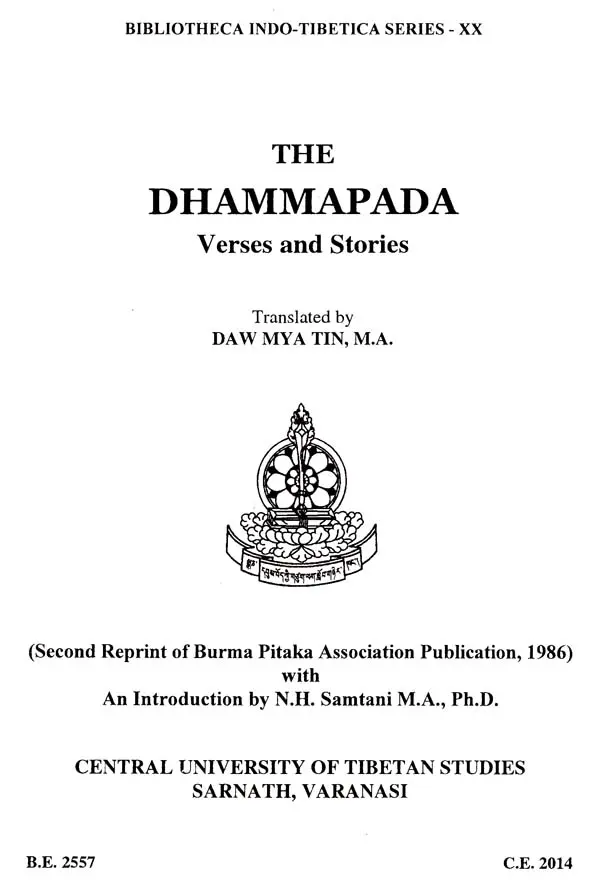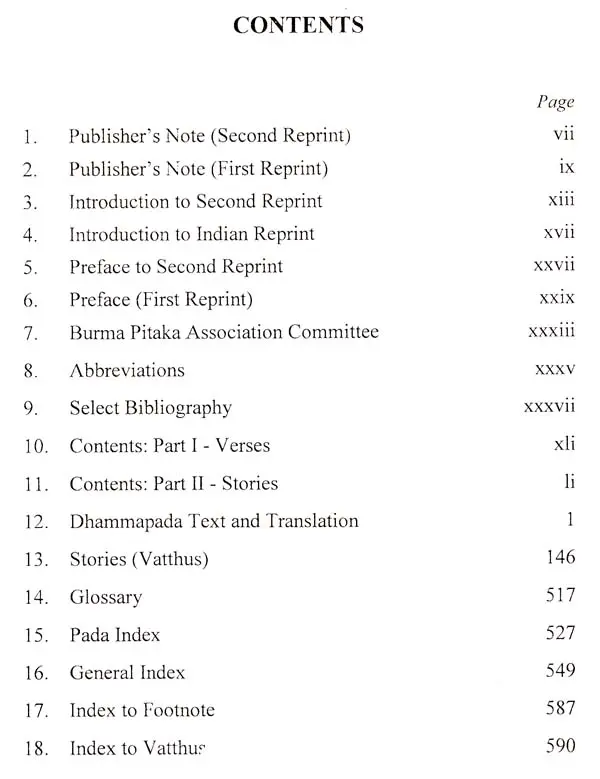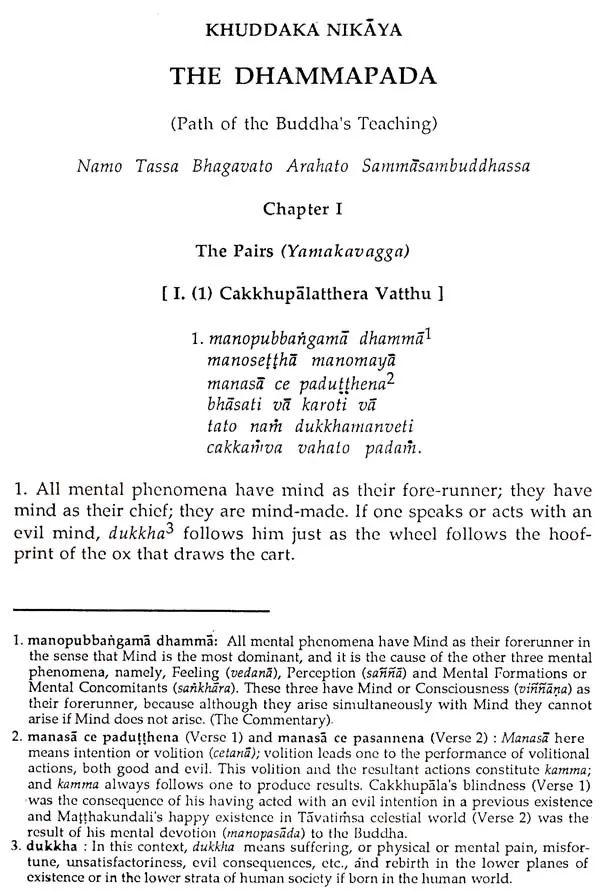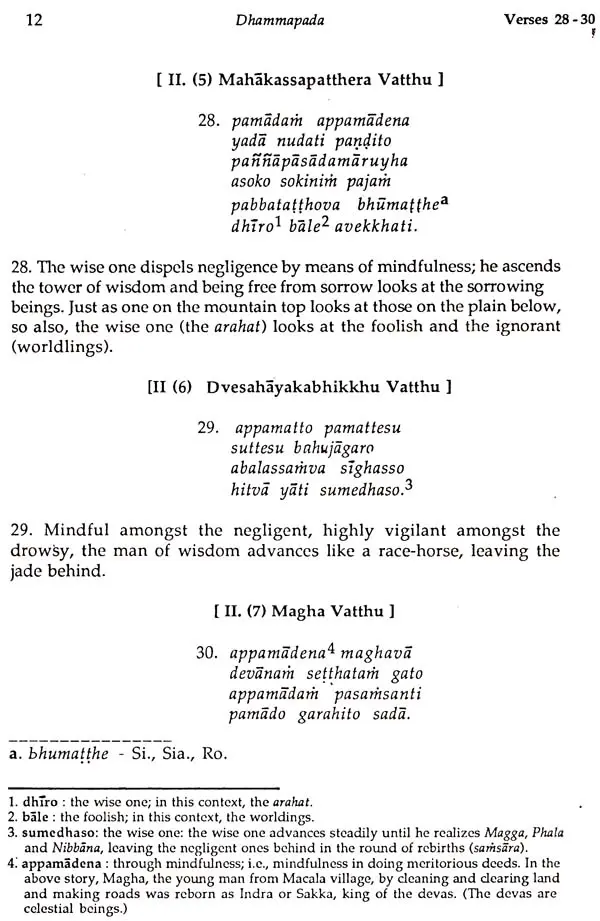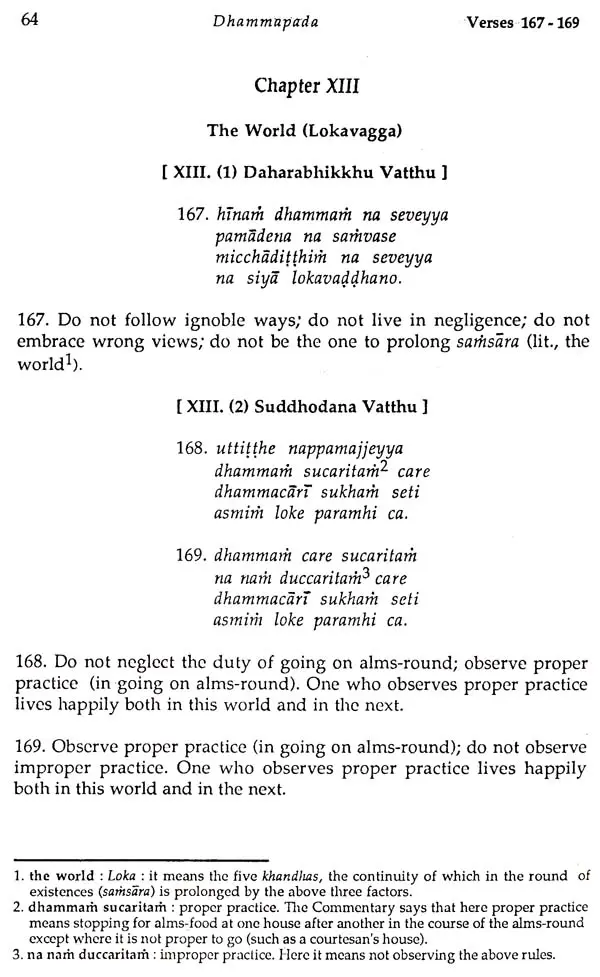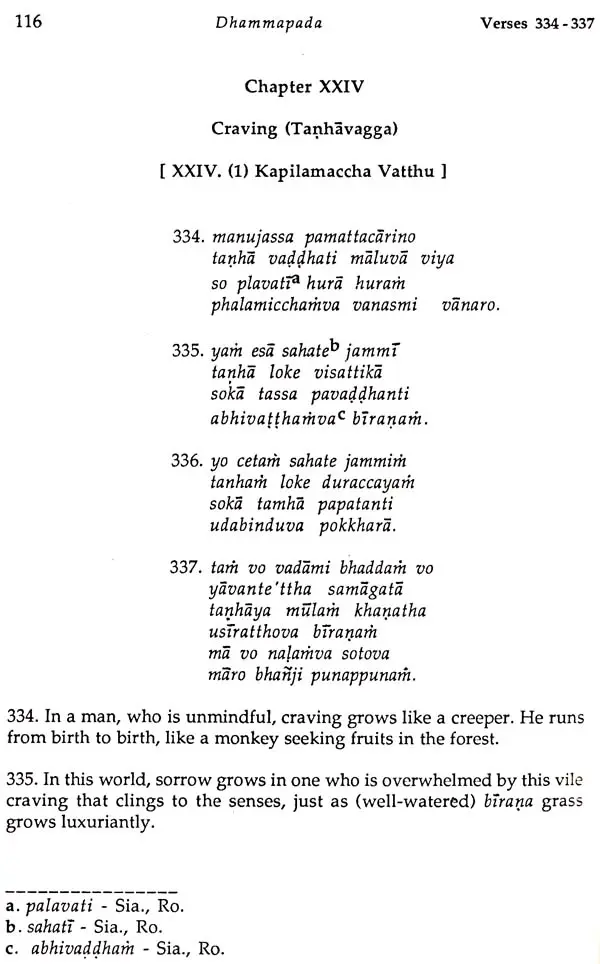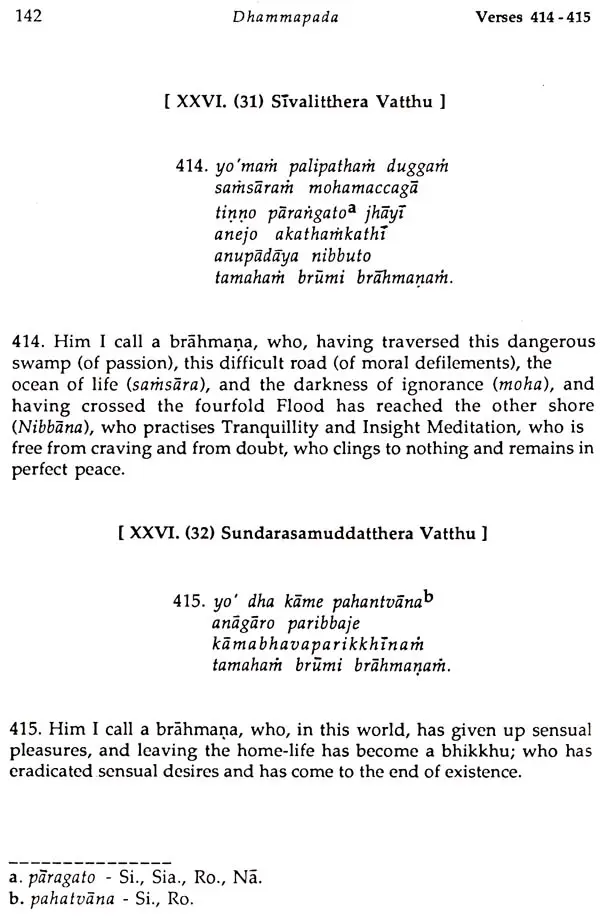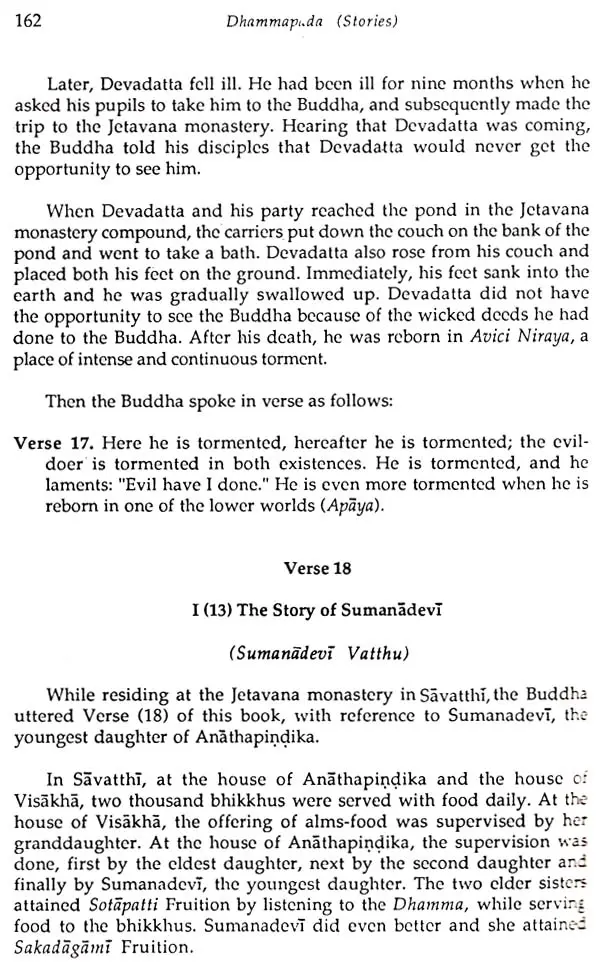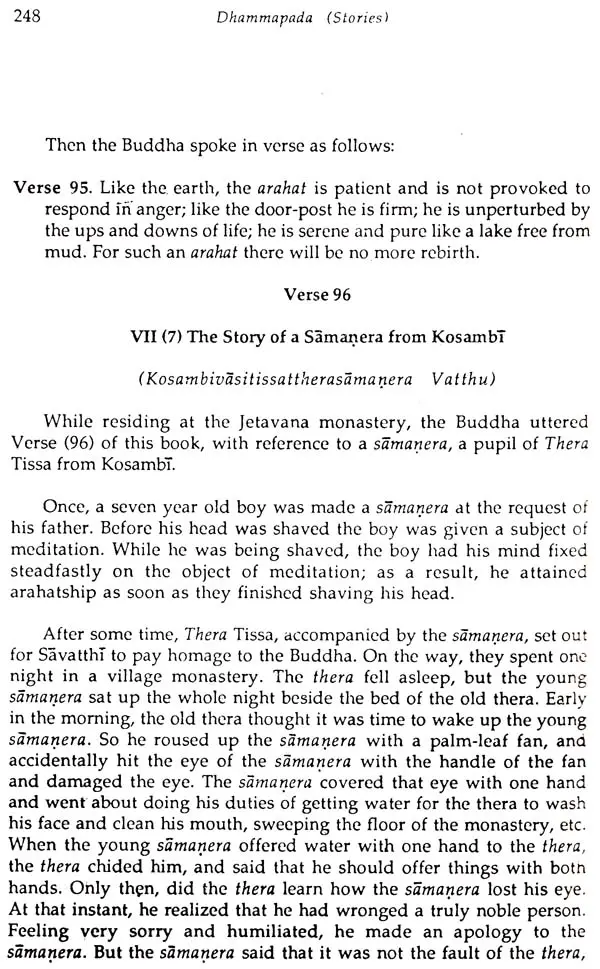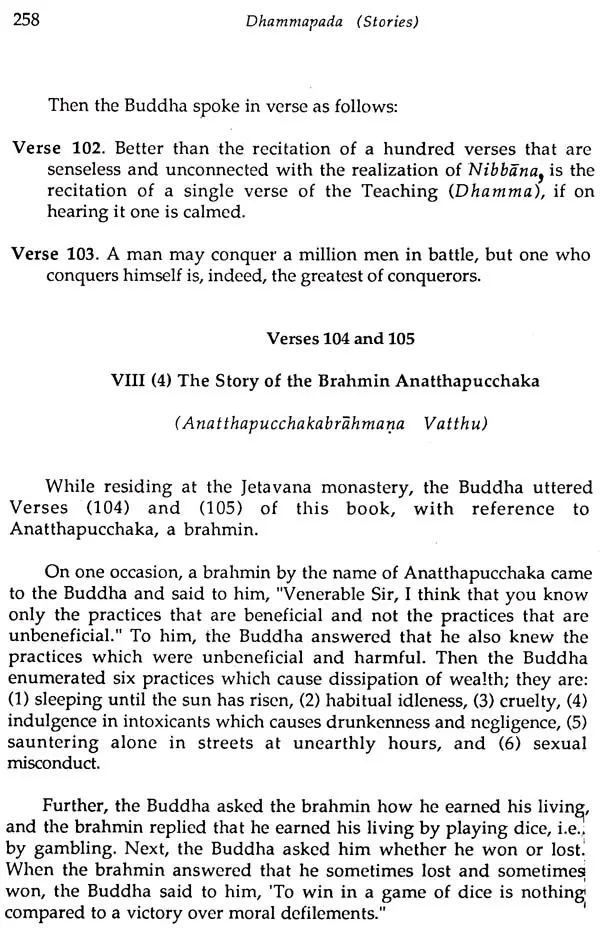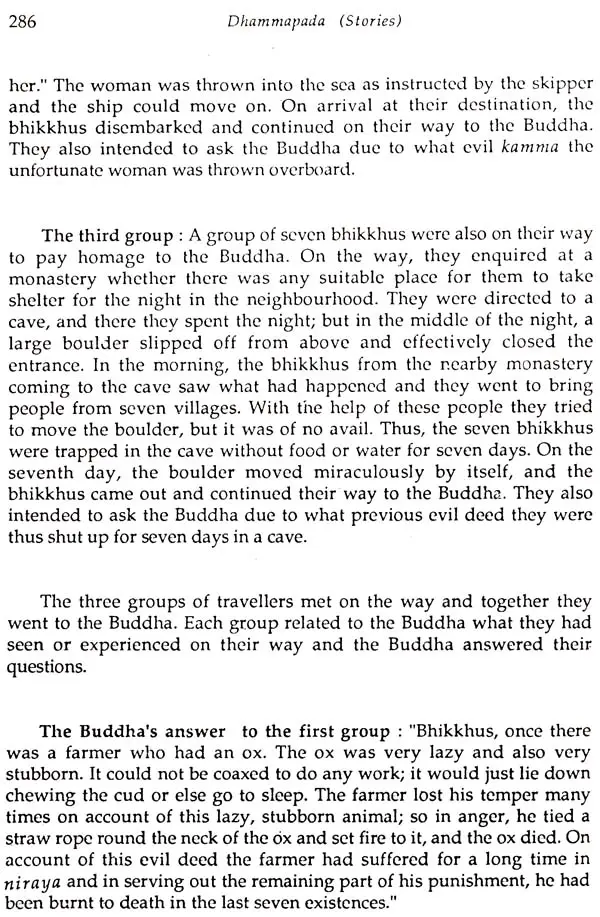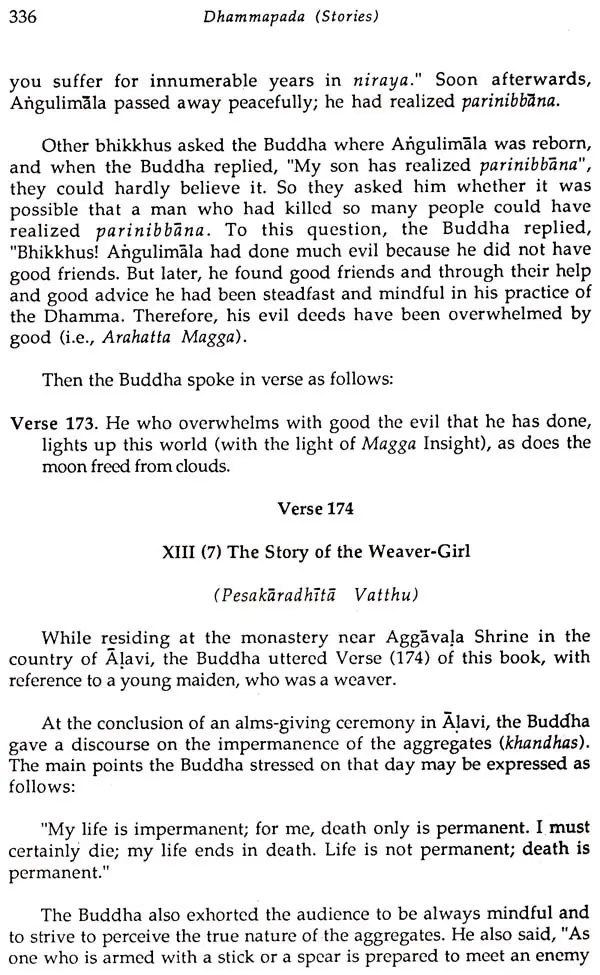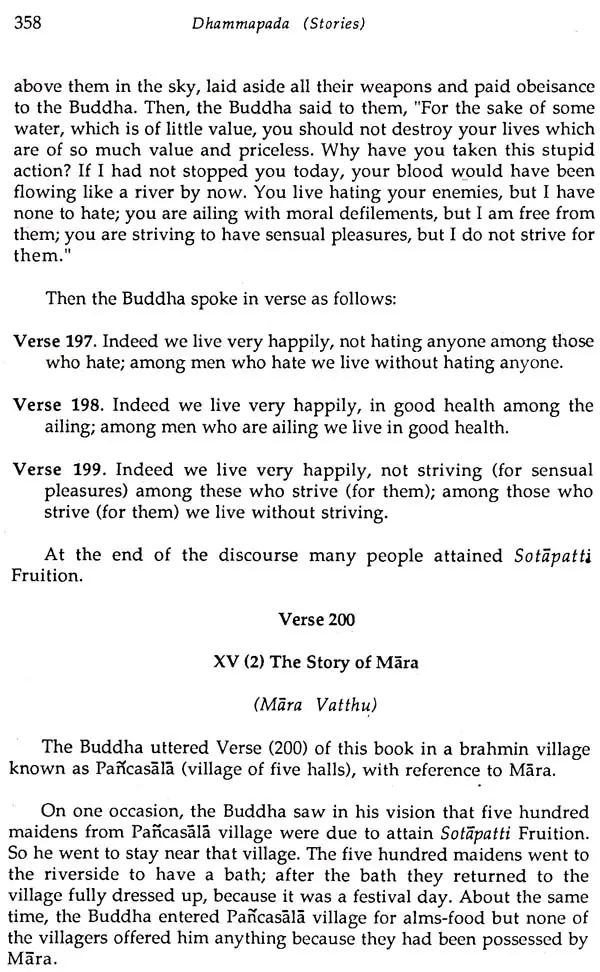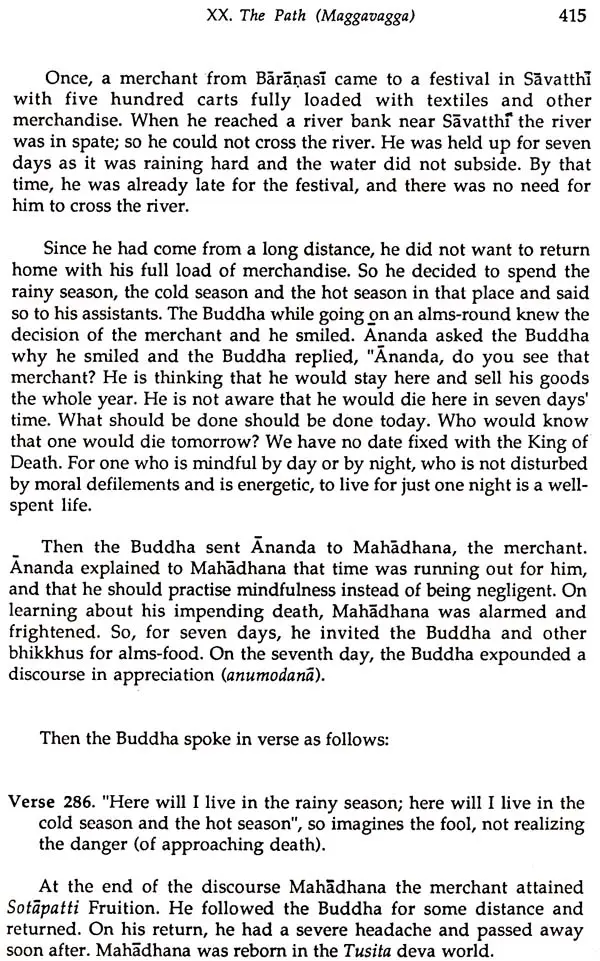
The Dhammapada Verses and Stories
Book Specification
| Item Code: | UAP175 |
| Author: | Daw Mya Tin |
| Publisher: | Central University of Tibetan Studies Sarnath (Varanasi) |
| Language: | ROMANIZED SANSKRIT with English Translation |
| Edition: | 2014 |
| ISBN: | 9789380282503 |
| Pages: | 653 |
| Cover: | PAPERBACK |
| Other Details | 9.50 X 6.00 inch |
| Weight | 890 gm |
Book Description
Dhammapada is one of the best known books of the Pitaka. It is a collection of the teachings of the Buddha expressed in clear, pithy verses. These verses were culled from various discourses given by the Buddha in the course of forty-five years of his teaching, as he travelled in the valley of the Ganges (Ganga) and the sub-mountain tract of the Himalayas. These verses are often terse, witty and convincing. Whenever similes are used, they are those that are easily understood even by a child, eg, the cart's wheel, a man's shadow, a deep pool, flowers. Through these verses, the Buddha exhorts one to achieve that greatest of all conquests, the conquest of self; to escape from the evils of passion, hatred and ignorance; and to strive hard to attain freedom from craving and freedom from the round of rebirths. Each verse contains a truth (dhamma), an exhortation, a piece of advice.
Dhammapada verses are often quoted by many in many countries of the world and the book has been translated into many languages. One of the earliest translations into English was made by Max Muller in 1870. Other translations that followed are those by F.L. Woodward in 1921, by Wagismara and Saunders in 1920, and by A.L. Edmunds (Hymns of the Faith) in 1902. Of the recent translations, that by Narada Mahathera is the most widely known. Dr. Walpola Rahula also has translated some selected verses from the Dhammapada and has given them at the end of his book What the Buddha Taught, revised edition (New York, 1974). The Chinese translated the Dhammapada from Sanskrit. The Chinese version of the Dhammapada was translated into English by Samuel Beal (Texts from the Buddhist Canon known as Dhammapada) in 1878.
In Burma, translations have been made into Burmese, mostly in prose, some with paraphrases, explanations and abridgements of stories relating to the verses. In recent years, some books on Dhammapada with both Burmese and English translations, together with Pali verses, have also been published.
The Dhammapada is the second book of the Khuddaka Nikaya of the Suttanta Pitaka, consisting of four hundred and twenty-three verses in twenty-six chapters arranged under various heads. In the Dhammapada are enshrined the basic tenets of the Buddha's Teaching.
**Contents and Sample Pages**
